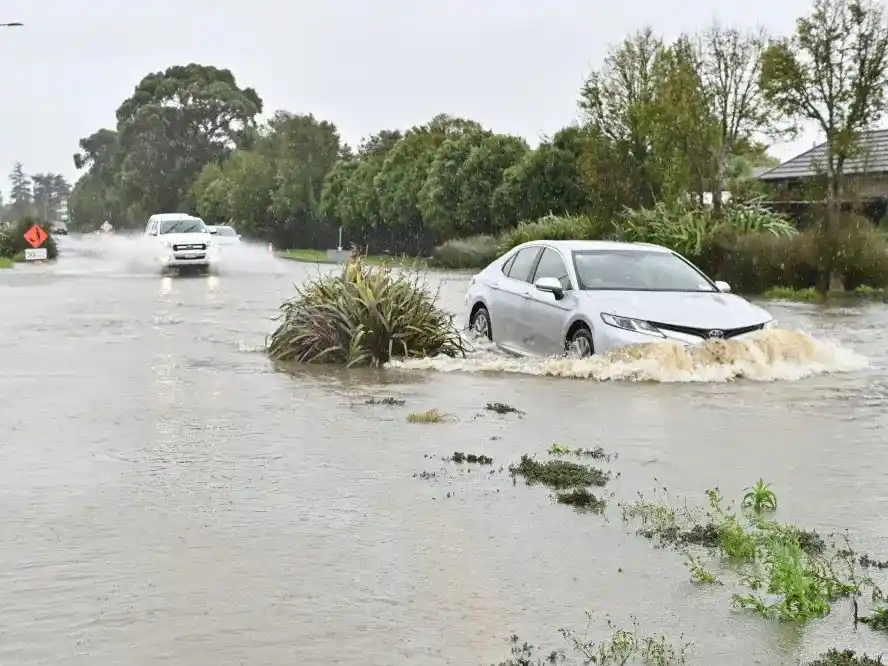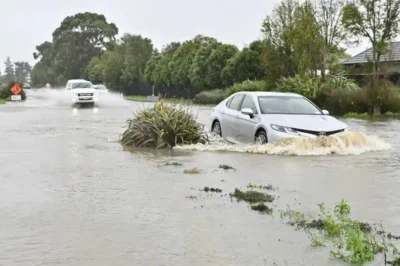
New Zealand is grappling with an unprecedented weather crisis, as severe flooding and landslides have led to the declaration of states of emergency in several regions. The Selwyn District in Canterbury has been particularly affected, with authorities urging residents to evacuate due to rising river levels. The situation has been exacerbated by torrential rains and gale-force winds, disrupting daily life and posing significant challenges to emergency services.
Widespread Disruptions Across the Country
The impact of the severe weather has been felt nationwide. In Wellington, Air New Zealand has cancelled the majority of its flights due to high winds, while Jetstar has reported multiple cancellations and diversions. Christchurch Airport has also experienced disruptions, with several flights affected by the adverse conditions. Despite these challenges, Auckland Airport has remained operational, though passengers are advised to stay updated on their flight statuses. The severe weather has also led to the issuance of 24 weather warnings across various regions, including Auckland, East Cape, Canterbury, and the West Coast. These warnings encompass heavy rain, strong winds, and snowfall in mountainous areas, further complicating the response efforts.
Infrastructure Under Strain
The heavy rainfall has overwhelmed storm water systems in several cities, leading to potential disruptions in basic household services such as water drainage. In Christchurch, residents have been warned of possible slow or no drainage in some areas due to the strain on the city’s storm water network. Authorities are working diligently to address these issues and minimize the impact on residents. Additionally, road closures have been implemented in various parts of the country, including South Christchurch, to ensure public safety and facilitate emergency response operations.
Government Response and Public Safety Measures
In response to the crisis, the New Zealand government has mobilized emergency services and resources to affected areas. The declaration of a state of emergency in Selwyn District allows for coordinated efforts at the national level, ensuring that resources are allocated promptly where needed. Authorities have urged residents to avoid unnecessary travel and to stay informed through official channels. Community centres have been set up to provide shelter and assistance to those displaced by the flooding. The government is also working closely with local councils to assess the damage and plan for recovery efforts.
Looking Ahead: Recovery and Preparedness
As the immediate threat subsides, attention is turning to recovery and rebuilding efforts. The government has committed substantial funds to assist in the restoration of infrastructure and support affected communities. Long-term measures are being considered to enhance the resilience of communities to future extreme weather events. These include investing in flood protection systems, improving storm water infrastructure, and implementing better urban planning practices to mitigate the impact of such disasters. The current crisis serves as a stark reminder of the vulnerabilities posed by climate change and the need for proactive measures to safeguard communities.
In conclusion, New Zealand is facing a significant weather-related emergency, with severe flooding and landslides disrupting daily life and posing challenges to emergency services. The government’s swift response and the resilience of communities will be crucial in navigating the recovery process and building a more resilient future.








































Leave a Reply